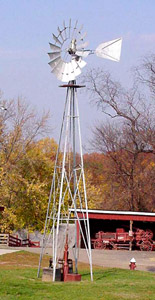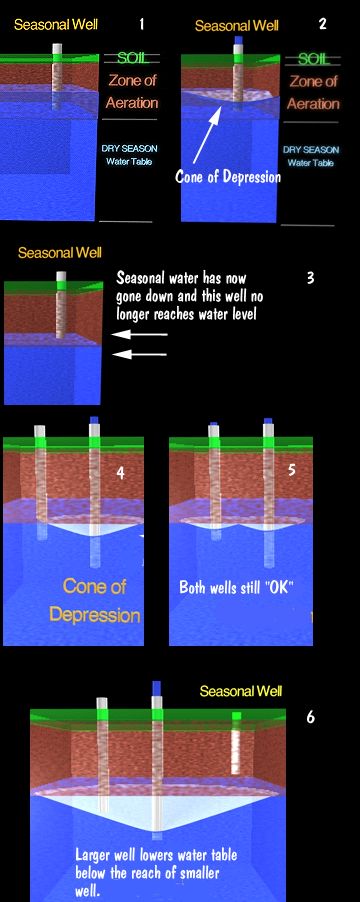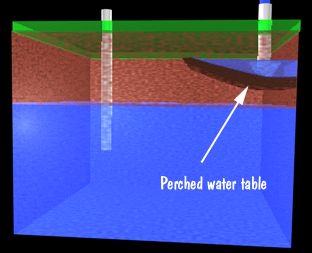
PhotoCredit: nps.gov
Wells are usually man-made holes driven into the ground and intersect the zone of saturation. In most cases water must be pumped (mechanical means) to lift the water back to the surface.
Hence through much of the United States you see the farm or ranch "windmill" which uses air power to pump water from depth.
More often than not we use electric pumps to move water faster and at higher volumes for irrigation today. When a well is placed in the ground and contacts the ground water, it is in position to begin pumping.

If a well is dug and contacts only the high-season water level, then the well will go dry after the rainy season ends and the water table falls to its normal level. It will be available in the next rainy season.
Why dig such a shallow well? Remember it cost money per foot of depth to dig a well. If a rancher only uses a particular field during the rainy season then a shallow well may be cost effective.
Wells that run all the way to the year-round water table can get water throughout the year. As they are pumped wells create a cone-of-depression about themselves. The cones is a conical area where the water is being removed faster than it can be replaced and lowers the nearby water table.
When a deeper well begins to remove water at a higher rate, its cone of depression may force a more shallow well to "go dry". When the deeper well cuts back on its pumping or if there is suddenly an influx of ground water (not likely) the more shallow well will once again be functional.

Water that is trapped above the ground water line and held in place by an aquiclude. It is a stand-alone bed of water that fills from the surface just like the ground water.
It has a far smaller volume and can be pumped dry if care is not taken. Since it is isolated it may have a far smaller area from which it can replenish itself.
Finally it may reside in a seasonal ground water domain and may become perched only after the seasonal water has dropped.
| NEXT | TOC | PREV |